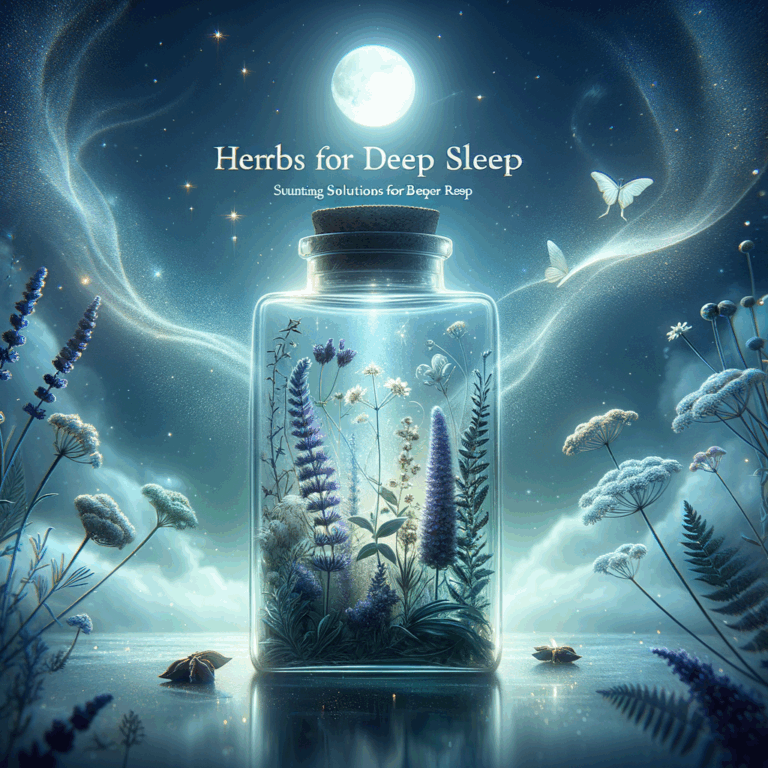
- Understanding Menstrual Cramps: An Overview
- The Science Behind Menstrual Cramps
- Key Menstrual Cramp Herbs to Consider
- 1. Ginger
- 2. Chamomile
- 3. Peppermint
- 4. Cinnamon
- 5. Fennel Seeds
- How to Use Herbal Remedies Effectively
- 1. Timing is Important
- 2. Pair Herbs with Other Remedies
- 3. Listen to Your Body
- Additional Lifestyle Tips for Menstrual Cramps
- 1. Regular Exercise
- 2. Dietary Adjustments
- 3. Stress Management
- Combining Herbs for Enhanced Efficacy
- Ginger and Chamomile Tea
- Peppermint and Fennel Infusion
- Cinnamon and Ginger Mix
- When to Seek Professional Help
- Signs to Watch For
- The Importance of Education and Awareness
- Frequently Asked Questions
- 1. How quickly can I expect relief from menstrual cramp herbs?
- 2. Are there any side effects associated with herbal remedies?
- 3. Can I combine multiple herbs together?
- 4. How long before my period should I start taking these herbs?
- 5. Are there any specific dietary restrictions while using herbal remedies?
- 6. Can I use essential oils along with herbal remedies?
- 7. Is it safe to use these herbs during pregnancy?
- 8. Can these herbs interact with medications?
- 9. How can I track the effectiveness of these herbs?
- 10. Where can I find these herbs?
- Conclusion
- References
Understanding Menstrual Cramps: An Overview
Menstrual cramps, or dysmenorrhea, affect many women every month. They can range from a mild annoyance to severe pain. Understanding the underlying causes of menstrual cramps is essential for effective relief. The uterus contracts to shed its lining, and these contractions can cause pain. Factors like hormonal imbalances or underlying health issues can exacerbate these cramps.
Many women seek natural remedies to alleviate symptoms. This is where menstrual cramp herbs come into play. These herbs have been used for centuries in different cultures to manage menstrual discomfort. In this post, we’ll explore various herbs, their benefits, and how to incorporate them into your wellness routine.
The Science Behind Menstrual Cramps
Menstrual cramps occur due to the release of prostaglandins, hormone-like substances. Higher levels of these compounds can lead to more intense cramping. Research also indicates that inflammation plays a role. This creates a cycle of pain that can be challenging to break.
Understanding your body can be empowering. Listen to your signals and identify patterns in your cycle. This awareness will help you find the best methods to manage your cramps, whether through lifestyle changes, diet, or herbal remedies.
Key Menstrual Cramp Herbs to Consider
Incorporating specific herbs into your routine can significantly reduce cramping. Here are some of the most effective menstrual cramp herbs that you should have on hand.
1. Ginger
Ginger is not only a flavorful spice; it’s also a powerful herb for relieving menstrual pain. Studies show that ginger can reduce the intensity of cramps. It possesses anti-inflammatory properties that can soothe the uterine muscles.
To use ginger, steep fresh ginger slices in hot water for tea. Drinking this daily during your period can provide relief. Alternatively, you can take ginger supplements, but consult with a healthcare professional before doing so.
2. Chamomile
Chamomile is known for its calming effects. It also has anti-inflammatory properties that help decrease menstrual pain. Chamomile tea can relax the muscles of the uterus, making cramps easier to handle.
To enjoy chamomile, brew a cup of tea and sip it before your period starts. Drinking it regularly may help reduce the severity of cramps over time.
3. Peppermint
Peppermint is another herb that can relieve menstrual cramps. Its menthol content can relax muscles and reduce pain. Furthermore, peppermint tea can help improve digestion, which is essential during menstruation.
Brewing peppermint tea is simple. Just steep peppermint leaves in hot water for a few minutes. This soothing drink can provide both pain relief and comfort.
4. Cinnamon
Cinnamon is not just a tasty addition to desserts. It can also serve as an effective remedy for menstrual cramps. It contains anti-inflammatory and anticoagulant properties, helping to minimize pain and regulate menstrual flow.
You can sprinkle cinnamon on oatmeal, smoothies, or in your tea. Try to incorporate it into your daily diet during your period for maximum benefits.
5. Fennel Seeds
Fennel seeds are highly regarded for their therapeutic properties. Research indicates that fennel can reduce severe menstrual cramps. It works by relaxing the muscles in the uterus, thus alleviating pain.
To use fennel seeds, chew on a teaspoon after meals or brew them in hot water to make tea. Regular consumption can lead to significant relief over time.
How to Use Herbal Remedies Effectively
Incorporating menstrual cramp herbs into your routine doesn’t have to be complicated. Here are some tips on how to maximize their effectiveness.
1. Timing is Important
Start taking herbs a few days before your period begins. This proactive approach can help minimize the intensity of the cramps. Consistency is key; regular use often leads to better results over time.
2. Pair Herbs with Other Remedies
Don’t rely solely on herbs. Consider combining them with other remedies, like heat pads and light exercise. These methods work synergistically to provide comprehensive relief.
3. Listen to Your Body
Each woman’s body reacts differently to herbal remedies. Monitor how you feel after using specific herbs. Adjust your herbal intake according to what works best for you.
Additional Lifestyle Tips for Menstrual Cramps
While herbs are excellent for pain relief, lifestyle changes can also make a big difference. Here are some additional tips to consider.
1. Regular Exercise
Engaging in regular physical activity can reduce the severity of menstrual cramps. Exercise releases endorphins, which act as natural painkillers. Aim for at least 30 minutes of moderate activity most days of the week.
2. Dietary Adjustments
A balanced diet rich in anti-inflammatory foods can help ease menstrual symptoms. Foods like leafy greens, nuts, and fatty fish can provide essential nutrients. Avoid excessive sugar and processed foods, which can increase bloating and discomfort.
3. Stress Management
High stress can intensify menstrual cramps. Consider incorporating relaxation techniques such as yoga, meditation, or deep breathing exercises. These approaches can help balance hormones and improve overall well-being.
Combining Herbs for Enhanced Efficacy
Using a combination of herbs can enhance their individual benefits. Here are some effective blends you can try.
Ginger and Chamomile Tea
Mix ginger and chamomile for a soothing tea. This blend combines anti-inflammatory properties with calming effects. Brew equal parts of fresh ginger and chamomile, steep in hot water, and enjoy.
Peppermint and Fennel Infusion
Combine peppermint leaves with fennel seeds for digestive and pain relief. Steep together in hot water for a refreshing tea that can alleviate cramps and bloating.
Cinnamon and Ginger Mix
Create a potent mix by combining cinnamon and ginger. Both herbs have anti-inflammatory properties. Add a teaspoon of ground cinnamon to a cup of ginger tea for unique benefits.
When to Seek Professional Help
While herbal remedies can help, some women may experience severe menstrual cramps that require medical attention. If your cramps are debilitating or persist despite home treatments, consult a healthcare professional.
Signs to Watch For
– Constant severe pain for several hours
– Pain accompanied by heavy bleeding or clotting
– Cramps that worsen over time
– Signs of infection such as fever or unusual discharge
Seeing a doctor can rule out underlying conditions like endometriosis or fibroids.
The Importance of Education and Awareness
Educating yourself about menstrual health can empower you. Knowledge allows you to make informed choices about your body. Embrace the journey of managing your menstrual health and explore various remedies.
Stay aware of your body’s responses and track your symptoms. Whether you choose to use herbal remedies or seek medical advice, prioritize your well-being. Empower yourself with knowledge and support from healthcare professionals.
Frequently Asked Questions
1. How quickly can I expect relief from menstrual cramp herbs?
Relief can vary based on the herb used and individual body responses. Some women feel improvement within hours, while others may require consistent use over several cycles.
2. Are there any side effects associated with herbal remedies?
While natural, some herbs can cause reactions. Mild side effects may include digestive issues or allergies. Always start with small doses and consult a healthcare provider if concerned.
3. Can I combine multiple herbs together?
Yes, combining herbs can enhance their benefits. However, make sure that they do not interact negatively with any medications you are currently taking.
4. How long before my period should I start taking these herbs?
Starting herbal remedies three to five days before your period can help lessen the intensity of cramps. Consistent use over time will yield the best results.
5. Are there any specific dietary restrictions while using herbal remedies?
Generally, there are no specific restrictions, but avoid excessive caffeine and processed foods, which can worsen cramps.
6. Can I use essential oils along with herbal remedies?
Yes, essential oils like lavender and clary sage can complement herbal remedies. Use them in diffusers, or apply them topically, mixed with a carrier oil.
7. Is it safe to use these herbs during pregnancy?
Some herbs may not be safe during pregnancy. Always consult a healthcare provider before using any herbal remedies if pregnant or breastfeeding.
8. Can these herbs interact with medications?
Herbs can interact with certain medications, particularly blood thinners. Always consult your doctor before combining herbal remedies with prescribed treatments.
9. How can I track the effectiveness of these herbs?
Keep a menstrual diary to record symptoms, pain levels, and herbal intake. This will help you assess which remedies work best for you.
10. Where can I find these herbs?
Many herbal remedies are available at local health stores, supermarkets, or online. Ensure they come from reputable sources for quality and safety.
Conclusion
Menstrual cramps can be a monthly challenge for many. Fortunately, a variety of menstrual cramp herbs can provide natural relief. From ginger to fennel, these remedies offer a holistic approach to managing pain.
Incorporating these herbs into your routine, along with lifestyle adjustments, creates a comprehensive strategy for relief. Always listen to your body and consult with healthcare professionals as needed. With the right knowledge and tools, you can navigate your menstrual cycle with greater ease and comfort.
—
References
1. National Institutes of Health – Herbal Remedies
2. Mayo Clinic – Menstrual Cramps
3. WebMD – Natural Menstrual Cramp Relief
4. Healthline – Best Herbs for Menstrual Pain
5. Journal of Obstetrics & Gynaecology – Herbal Medicine for Menstrual Pain



